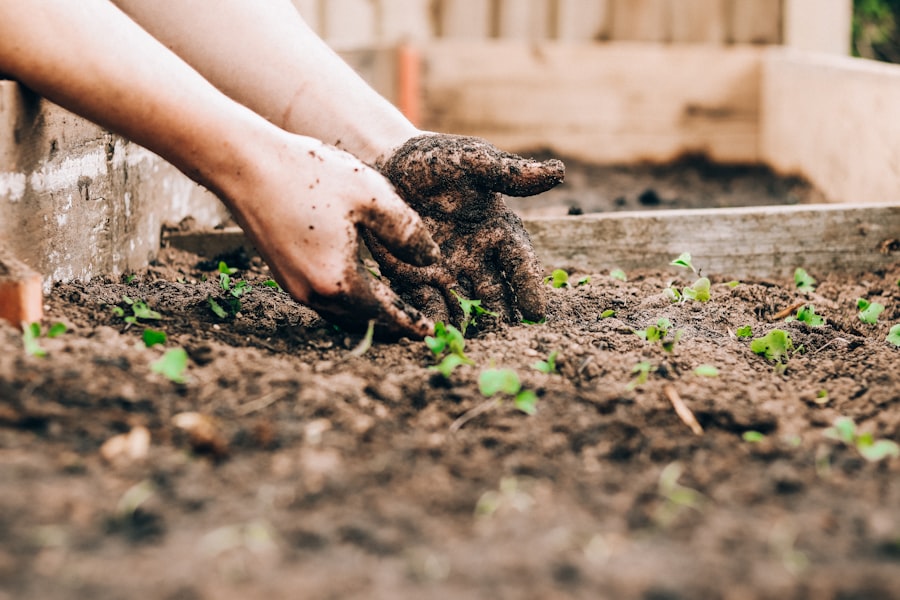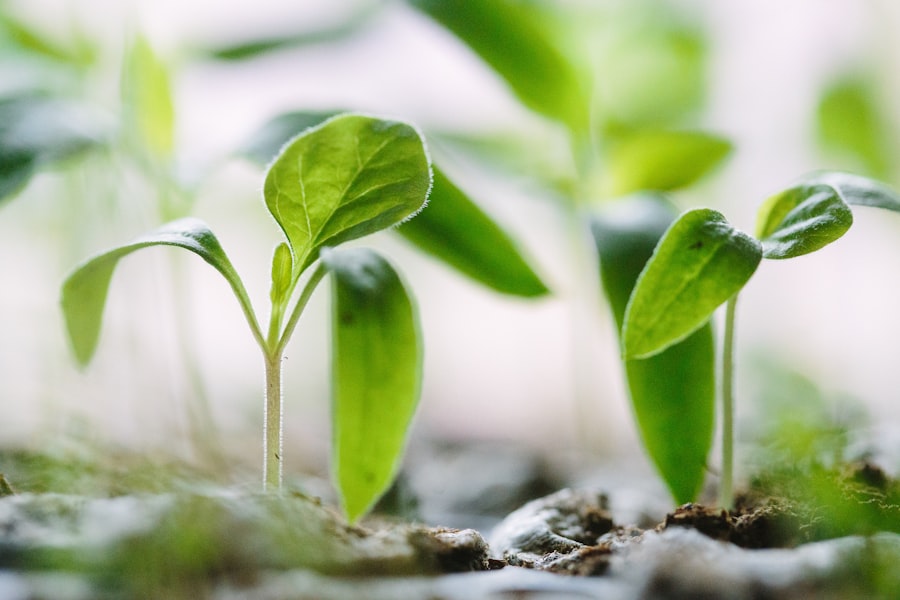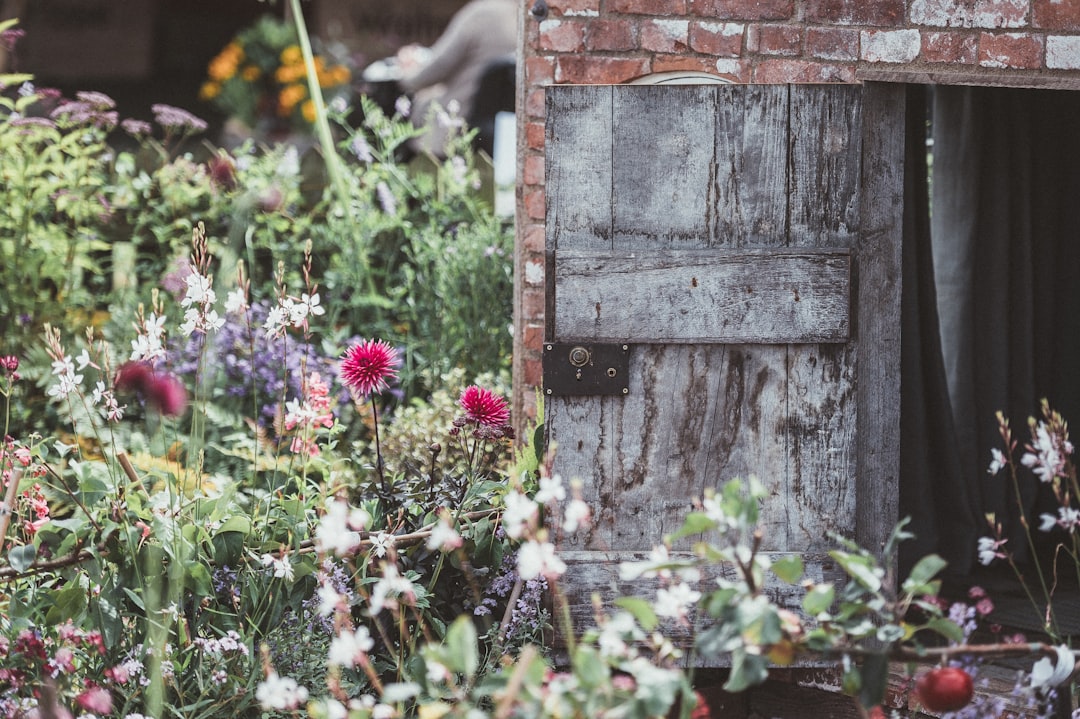Cloches and bell jars are essential tools in the gardener’s arsenal, serving both functional and aesthetic purposes. These protective structures, often made of glass or plastic, create a microclimate that can significantly enhance plant growth and health. Cloches, typically dome-shaped, are designed to cover individual plants or rows, while bell jars, with their elegant curves, can serve as both protective covers and decorative elements in the garden.
The use of these items allows gardeners to extend the growing season, protect delicate seedlings from harsh weather, and even deter pests.
The appeal of cloches and bell jars extends beyond their practical applications; they also add a touch of charm to any garden setting. Their transparent nature allows sunlight to filter through, creating a warm environment for plants while also providing a glimpse of the greenery within.
This dual functionality makes them a favorite among gardeners who appreciate both utility and beauty in their outdoor spaces.
As we delve deeper into the history, selection, and usage of cloches and bell jars, it becomes clear that these tools are not merely accessories but vital components of successful gardening.
Key Takeaways
- Cloches and bell jars are versatile garden tools used to protect plants and extend the growing season.
- The history of cloches and bell jars dates back to the 17th century, when they were first used in gardens to protect delicate plants.
- When choosing a cloche for your garden, consider factors such as material, size, and ventilation to ensure the best protection for your plants.
- Cloches can be used to protect plants from frost and pests, while also extending the growing season by creating a warmer microclimate.
- Bell jars can be creatively used in garden decor, adding a touch of elegance and charm to outdoor spaces.
The History of Cloches and Bell Jars in Gardens
The Evolution of Cloches
As gardening techniques evolved, the design and materials used also changed, leading to the modern versions we have today. Bell jars have a similarly rich past, often associated with Victorian-era gardening. During this time, the popularity of exotic plants surged, prompting gardeners to seek innovative ways to cultivate these delicate specimens.
Bell Jars: Aesthetic Appeal
Bell jars became a staple in many gardens, serving not only as protective covers but also as decorative elements that showcased the beauty of the plants within. The aesthetic appeal of bell jars has endured through the centuries, making them a beloved choice for both traditional and contemporary gardens alike.
Timeless Gardening Tradition
Choosing the Right Cloche for Your Garden

Selecting the appropriate cloche for your garden involves considering several factors, including size, material, and intended use. Cloches come in various shapes and sizes, from small individual covers designed for seedlings to larger structures that can accommodate multiple plants. When choosing a cloche, it is essential to assess the specific needs of your garden.
For instance, if you are protecting young seedlings from frost, a smaller cloche may suffice. However, if you are looking to shield larger plants or rows of vegetables, a more substantial option will be necessary. Material is another critical consideration when selecting a cloche.
Glass cloaches offer excellent light transmission and durability but can be heavy and fragile. On the other hand, plastic options are lightweight and less prone to breakage but may not provide the same level of insulation as glass. Additionally, some gardeners prefer eco-friendly materials such as recycled plastics or biodegradable options.
Ultimately, the right cloche will depend on your gardening style, climate conditions, and personal preferences.
How to Use Cloches to Protect Plants from Frost and Pests
Cloches serve as an effective barrier against frost and pests, making them invaluable during transitional seasons when temperatures can fluctuate dramatically. To protect plants from frost damage, it is crucial to place cloaches over vulnerable plants before temperatures drop at night. The enclosed space traps heat radiating from the soil, creating a warmer microclimate that can prevent frost from settling on delicate leaves.
For optimal results, ensure that the cloche is securely positioned over the plant without touching the foliage to avoid heat transfer issues. In addition to frost protection, cloaches can also deter pests such as aphids and slugs. By creating a physical barrier between your plants and potential threats, you can reduce the likelihood of infestations.
When using cloaches for pest control, it is essential to monitor the environment inside the cloche regularly. While these structures provide protection, they can also create a humid environment that may encourage mold or mildew growth if not properly ventilated. Incorporating small vents or lifting the cloche periodically can help maintain airflow while still offering protection.
Using Cloches to Extend the Growing Season
One of the most significant advantages of using cloches is their ability to extend the growing season for various plants. By providing warmth and protection from adverse weather conditions, gardeners can start planting earlier in the spring and continue harvesting later into the fall. This is particularly beneficial for crops like tomatoes, peppers, and cucumbers that thrive in warmer temperatures but may struggle with early frosts or late-season chills.
To maximize the benefits of cloches for extending the growing season, consider using them strategically throughout your garden. For instance, you might start seedlings indoors and then transfer them outside under cloaches once they have developed a few true leaves. This method allows for a smoother transition while protecting young plants from unexpected cold snaps.
Additionally, using cloaches in late summer can help prolong the harvest of fall crops by shielding them from early frosts that could otherwise curtail their growth.
Creative Ways to Use Bell Jars in Garden Decor

Beyond their practical applications in plant protection, bell jars can also serve as stunning decorative elements in any garden setting. Their elegant design lends itself well to various creative uses that can enhance the overall aesthetic of your outdoor space. For example, bell jars can be used to create captivating centerpieces on garden tables or as part of outdoor displays that showcase seasonal flowers or foliage.
Another innovative way to incorporate bell jars into garden decor is by using them as terrariums. By filling bell jars with small plants like succulents or air plants along with decorative stones or moss, you can create miniature ecosystems that thrive within their glass confines. These terrariums not only add visual interest but also serve as conversation starters for guests visiting your garden.
Additionally, bell jars can be used to protect delicate blooms or herbs while still allowing light to filter through, creating an enchanting display that highlights nature’s beauty.
DIY Cloche Ideas for the Budget-Conscious Gardener
For those looking to incorporate cloches into their gardening practices without breaking the bank, there are numerous DIY options available that are both cost-effective and functional. One popular method involves repurposing clear plastic containers such as large soda bottles or food storage containers. By cutting off the bottom of these containers and placing them over young plants, you create an instant cloche that provides protection from frost and pests while allowing sunlight to penetrate.
Another budget-friendly option is to use old glass jars or vases as mini-cloches for individual plants or seedlings. Simply remove any labels and ensure that the glass is clean before placing it over your plants. This method not only recycles materials but also adds a charming touch to your garden decor.
Additionally, you can create larger cloches by connecting several glass jars together using wire or string lights for added ambiance during evening hours.
Tips for Caring for Plants Under Cloches
While cloches provide essential protection for plants, they also require careful management to ensure optimal growth conditions. One critical aspect of caring for plants under cloches is monitoring temperature and humidity levels within the enclosed space. On sunny days, temperatures can rise quickly under glass or plastic covers, potentially leading to heat stress for your plants.
To prevent this issue, consider removing or venting your cloche during particularly warm days to allow excess heat to escape. Another important consideration is watering practices for plants under cloches. The enclosed environment can lead to increased humidity levels; therefore, it is essential to check soil moisture regularly.
Overwatering can result in root rot or fungal diseases due to stagnant moisture trapped beneath the cloche. Instead of relying solely on visual cues, consider using a moisture meter to gauge soil conditions accurately before watering.
How to Use Cloches for Seed Starting
Cloches are particularly beneficial for seed starting as they create an ideal environment for germination by providing warmth and protection from harsh weather conditions. When starting seeds indoors or outdoors under cloches, it is crucial to ensure that they are placed over well-prepared soil that has been adequately moistened before sowing seeds. This practice helps maintain consistent moisture levels while promoting healthy seedling development.
To maximize success when using cloaches for seed starting, consider grouping similar seeds together based on their germination requirements. For instance, fast-germinating seeds like lettuce or radishes can be sown under one cloche while slower germinators like peppers or tomatoes are placed under another. This method allows you to manage each group’s specific needs more effectively while ensuring optimal growth conditions throughout the germination process.
Using Bell Jars for Indoor Gardening
Bell jars are not limited to outdoor use; they can also be effectively utilized in indoor gardening settings. Their transparent design allows light to filter through while creating a humid microenvironment ideal for certain houseplants or herbs that thrive in moisture-rich conditions. For instance, tropical plants such as ferns or orchids benefit greatly from being housed within bell jars where humidity levels remain elevated.
When using bell jars indoors, it is essential to select appropriate plants that will thrive in this enclosed environment without becoming overcrowded or stressed due to lack of airflow. Additionally, consider placing decorative stones or activated charcoal at the bottom of the jar to aid drainage while preventing root rot caused by excess moisture accumulation. Regularly monitoring plant health and adjusting care routines accordingly will ensure successful indoor gardening experiences with bell jars.
Conclusion and Final Tips for Using Cloches in Gardens
Incorporating cloches into your gardening practices offers numerous benefits ranging from frost protection to aesthetic enhancement within your outdoor space. By understanding their history and functionality alongside creative applications such as DIY projects or indoor gardening techniques using bell jars, you can maximize their potential in your garden endeavors. Remember always to monitor temperature and humidity levels when using cloaches while ensuring proper care routines tailored specifically for each plant type housed beneath these protective covers.
As you explore various ways to utilize cloaches effectively within your gardening journey—whether through seed starting techniques or creative decor ideas—embrace experimentation! Each garden presents unique challenges; therefore adapting strategies based on individual circumstances will lead toward greater success over time while fostering an appreciation for nature’s beauty along the way.
If you’re looking to add a pop of color to your garden, you may want to consider planting yellow peonies. Chikus Garden has a great article on exploring the beauty of yellow peonies in your garden. These vibrant flowers can brighten up any space and are sure to be a showstopper. In addition to adding new plants to your garden, it’s also important to take care of existing ones. Check out their article on common Meyer lemon diseases for tips on keeping your citrus trees healthy. And if you’re looking to prune and shape your garden, don’t forget to read their guide on cutting back burning bush for a tidy and well-maintained outdoor space.
FAQs
What are cloches and bell jars?
Cloches and bell jars are protective covers used in gardening to shield plants from harsh weather conditions, pests, and other environmental factors. They are typically made of glass, plastic, or metal and come in various shapes and sizes.
How do you use cloches in gardens?
Cloches are placed over individual plants or seedlings to create a mini greenhouse effect, providing warmth and protection. They can also be used to extend the growing season by trapping heat and protecting plants from frost.
What are the benefits of using cloches in gardens?
Using cloches in gardens can help to protect plants from cold temperatures, wind, and pests. They can also promote faster growth and protect delicate seedlings, allowing for an earlier and healthier harvest.
What types of plants are best suited for cloche protection?
Cloches are particularly useful for protecting tender plants such as tomatoes, peppers, and eggplants, as well as delicate seedlings and young plants. They can also be used to protect early spring crops from late frosts.
Are there any drawbacks to using cloches in gardens?
While cloches can provide many benefits, they can also create a humid environment that may lead to mold or mildew if not properly ventilated. Additionally, they may need to be removed during hot weather to prevent overheating.

